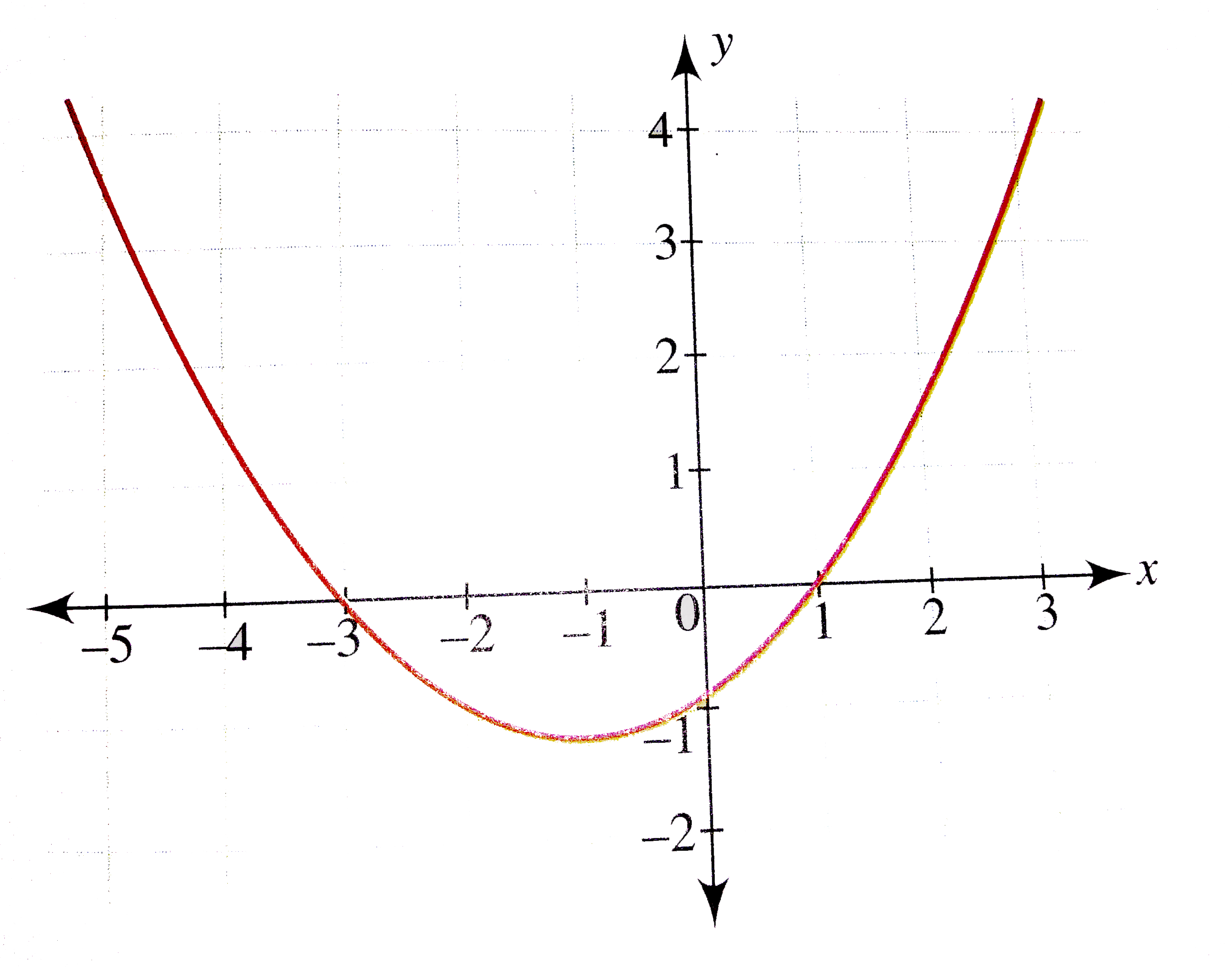Let y=sgn(x), then
|x|=xSgn(x)
sgn(sgn(x))=sgn(x)
x=|x|Sgn(x)
All of these
The correct Answer is:D
To solve the problem, we need to analyze the function y=sgn(x) and verify the given options based on the properties of the signum function. The signum function is defined as follows:
sgn(x)=⎧⎨⎩1if x>00if x=0−1if x<0
Now, let's check each option one by one.
Option 1: |x|=x⋅sgn(x)
1. Case 1: x>0
- Here, |x|=x and sgn(x)=1.
- Therefore, |x|=x⋅1=x. This is true.
2. Case 2: x=0
- Here, |0|=0 and sgn(0)=0.
- Therefore, |0|=0⋅0=0. This is true.
3. Case 3: x<0
- Here, |x|=−x (since x is negative) and sgn(x)=−1.
- Therefore, |x|=−x⋅(−1)=x. This is true.
Thus, Option 1 is correct.
Option 2: sgn(sgn(x))=sgn(x)
1. Case 1: x>0
- Here, sgn(x)=1.
- Therefore, sgn(sgn(x))=sgn(1)=1. This is true.
2. Case 2: x=0
- Here, sgn(0)=0.
- Therefore, sgn(sgn(0))=sgn(0)=0. This is true.
3. Case 3: x<0
- Here, sgn(x)=−1.
- Therefore, sgn(sgn(x))=sgn(−1)=−1. This is true.
Thus, Option 2 is correct.
Option 3: x=|x|⋅sgn(x)
1. Case 1: x>0
- Here, |x|=x and sgn(x)=1.
- Therefore, x=x⋅1=x. This is true.
2. Case 2: x=0
- Here, |0|=0 and sgn(0)=0.
- Therefore, 0=0⋅0=0. This is true.
3. Case 3: x<0
- Here, |x|=−x and sgn(x)=−1.
- Therefore, x=−x⋅(−1)=x. This is true.
Thus, Option 3 is correct.
Conclusion
All options are correct.
- Here, |x|=x and sgn(x)=1.
- Therefore, |x|=x⋅1=x. This is true.
- Here, |0|=0 and sgn(0)=0.
- Therefore, |0|=0⋅0=0. This is true.
- Here, |x|=−x (since x is negative) and sgn(x)=−1.
- Therefore, |x|=−x⋅(−1)=x. This is true.
- Here, sgn(x)=1.
- Therefore, sgn(sgn(x))=sgn(1)=1. This is true.
- Here, sgn(0)=0.
- Therefore, sgn(sgn(0))=sgn(0)=0. This is true.
- Here, sgn(x)=−1.
- Therefore, sgn(sgn(x))=sgn(−1)=−1. This is true.
- Here, |x|=x and sgn(x)=1.
- Therefore, x=x⋅1=x. This is true.
- Here, |0|=0 and sgn(0)=0.
- Therefore, 0=0⋅0=0. This is true.
- Here, |x|=−x and sgn(x)=−1.
- Therefore, x=−x⋅(−1)=x. This is true.
All options are correct.
Topper's Solved these Questions
- RELATIONS AND FUNCTIONS BOOK - AAKASH INSTITUTE ENGLISHCHAPTER - RELATIONS AND FUNCTIONS EXERCISE - Assignment (Section - C) Objective Type Questions (More than one option are correct)
17 Videos
- RELATIONS AND FUNCTIONS BOOK - AAKASH INSTITUTE ENGLISHCHAPTER - RELATIONS AND FUNCTIONS EXERCISE - Assignment (Section - D) Linked Comprehension Type Questions
17 Videos
- RELATIONS AND FUNCTIONS BOOK - AAKASH INSTITUTE ENGLISHCHAPTER - RELATIONS AND FUNCTIONS EXERCISE - Assignment (Section - A) Objective Type Questions (one option is correct)
102 Videos
- PROBABILITYBOOK - AAKASH INSTITUTE ENGLISHCHAPTER - PROBABILITYEXERCISE - ASSIGNMENT SECTION-J (aakash challengers questions)
11 Videos
- SEQUENCES AND SERIES BOOK - AAKASH INSTITUTE ENGLISHCHAPTER - SEQUENCES AND SERIES EXERCISE - Assignment (SECTION - J) Aakash Challengers
11 Videos
Similar Questions
If f(x)=sgn(x5), then which of the following is/are false (where sgn denotes signum function)
View SolutionIf f(x)=x3sgn(x), then
View SolutionLet y=x2+x , the minimum value of y is
View SolutionIf f(x)=sgn(cos2x−2sinx+3), where sgn () is the signum function, then f(x)
View SolutionThe ∫π/20sgn(sin2x−sinx+12) dx is equal to , (where , sgn (x) denotes the sigum function of x)
View SolutionIf f(x)=sinx and g(x)=sgnsinx, then g'(1) equals
View SolutionLet y=f(x) satisfies dydx=x+yx and f(e)=e then the value of f(1) is
View SolutionGiven the graph of the function y=f(x), draw the graph of y=sgn(x).

View SolutionIf f(x)=cos−1(sgn(2[x]3x−[x])), where sgn ( ) denotes the signum function and [.] dentoes the greatest integer functions, then which of the following is/are correct?
View SolutionLet f(x)andg(x)be functions which take integers as arguments. Let f(x+y)=f(x)+g(y)+8 for all intege x and y. Let f(x) = x for all negative integers x and let g(8)=17. Find f(0).
View Solution
